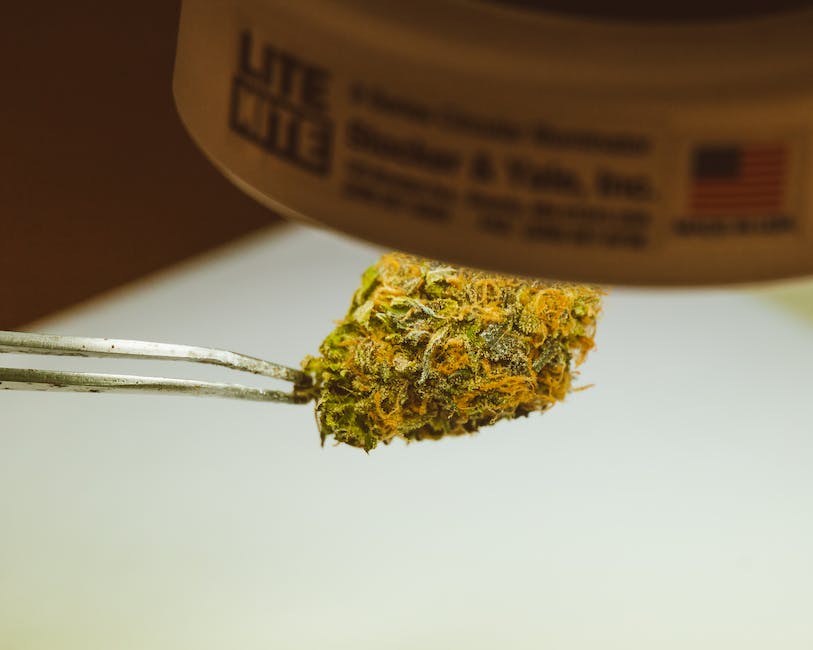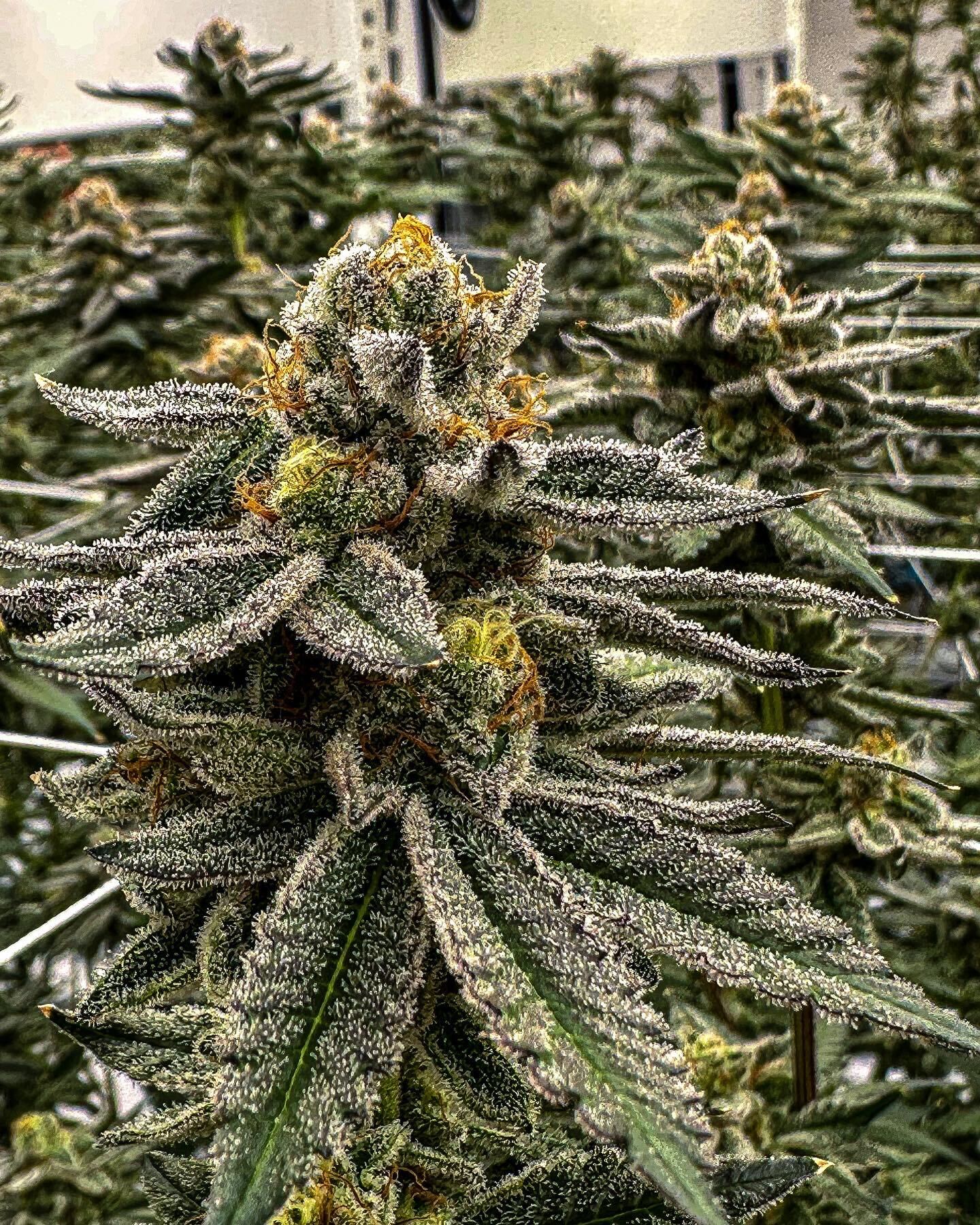Exploring how much is a pound of weed in California’s recreational market unveils a complex topic, influenced by the recent legalization of recreational cannabis which has transformed the market. As demand for cannabis products increases, this question becomes increasingly relevant. The price varies significantly based on factors such as quality, strain, location, and the specific regulations governing the cannabis industry in different regions of the state.
Key Takeaways
- Price Variability: In addressing how much is a pound of weed in California’s recreational market, prices range, prices range from $200 to $1,400, influenced by quality, strain, location, and regulations.
- Influencing Factors: Prices are shaped by supply and demand, production costs, taxes, strain popularity, and market competition.
- Price Categories: Cannabis is priced across high-end, mid-range, and budget-friendly categories, reflecting differences in quality and consumer preferences.
- Quality and Potency: Higher quality and potency lead to higher prices, reflecting consumer demand for premium experiences.
- Production and Distribution Costs: Significant costs include cultivation, compliance, manufacturing, distribution, and taxes.
- Recreational vs. Medical Cannabis: Recreational cannabis generally costs more due to higher taxes compared to medical cannabis.
- Taxes and Regulations Impact: State and local taxes, along with strict regulations, significantly affect cannabis pricing.
In California, cannabis prices can vary greatly, ranging from around $200 to $1,400 per pound of weed in the recreational market – depending on quality. The wide range in pricing reflects the diversity of the industry, with different dispensaries and cultivators setting their own prices based on supply and demand dynamics. When considering how much is a pound of weed, factors include quality, cultivation methods, factors include quality, cultivation methods, and the reputation and brand recognition of the supplier. Keep in mind, California is known for cultivating some of the best weed in the United States. Higher quality cannabis, often referred to as “top-shelf,” can command higher prices due to its potency, aroma, and overall appeal.
Additionally, the type of cannabis strain also plays a significant role in how much a pound of weed will cost. Popular or rare strains often see higher demand, which can push prices up. Additionally, the balance between supply and demand, seasonal changes, and the general state of the market can influence prices. The location of the dispensary or supplier is another crucial factor. Those in cities or tourist areas might have higher prices due to increased operational costs, like rent, and higher consumer demand. Price differences also exist between wholesale and retail buyers. Wholesalers, such as dispensaries, might negotiate lower prices for bulk purchases, thanks to their relationships with growers and the potential for ongoing business.
In essence, understanding how much is a pound of weed in California’s recreational market reveals that prices vary. but varies based on quality, strain, location, and market regulations. Consumers are advised to research and compare prices thoroughly, taking their specific preferences into account before making a purchase. As the market evolves, it will be fascinating to see how these pricing trends develop and their impact on the industry.
Explanation of the California recreational cannabis market and its demand

Since the legalization of recreational cannabis in 2018, California has seen a significant surge in demand, prompting many to ask, “How much is a pound of weed?” in this evolving market. With a population of nearly 40 million people, the state has not only become a lucrative market for cannabis growers, but it has also opened up various business opportunities throughout the industry.
Several factors contribute to the soaring demand for cannabis in California, not least the cultural shift towards accepting its use, which influences the market dynamics, including how much a pound of weed costs. Firstly, the cultural shift towards accepting and normalizing cannabis use has played a crucial role in the market’s growth. As the stigma surrounding cannabis continues to dissipate, more people are becoming open to exploring its recreational uses.
Moreover, the significant expansion in the availability and variety of cannabis products in California plays a crucial role in the market’s diversity, affecting the price range for a pound of weed. From traditional flower to edibles, concentrates, and vape pens, consumers have many choices when it comes to selecting their preferred consumption method. This diversification of products caters to a broader customer base, further driving up demand.
Additionally, the booming tourism industry in California also fuels cannabis demand, with visitors often curious about the cost of a pound of weed in the state’s recreational market. Visitors from all over the world are attracted to California’s beautiful landscapes, renowned cities, and cultural experiences. As a result, many tourists are curious to explore the state’s recreational cannabis market, contributing substantially to its overall demand.
Importantly, the demand for cannabis in California is intricately linked to its pricing, with consumers navigating between licensed dispensaries and the black market to find the best price for a pound of weed. With the market now legal, buyers have the choice to buy from licensed dispensaries, which often have higher prices because of taxes and regulations. Yet, there’s still a black market that offers cheaper options, drawing in some customers.
The demand for cannabis in California’s recreational market is shaped by changing views on cannabis, a broad selection of products, and its attraction to both locals and tourists. For businesses aiming to succeed in this shifting industry, understanding these demand drivers is crucial.
Overview of the factors influencing how much is a pound of weed in the California recreational market

Various factors determine how much a pound of weed costs in California’s recreational market, significantly affecting both consumers and businesses. that play a significant role in determining the price of a pound of weed. Understanding these factors can provide valuable insights into the pricing dynamics and help consumers and businesses make informed decisions.
5 Key factors influencing the California cannabis price per pound
The question of how much a pound of weed costs is directly impacted by the supply and demand dynamics in California.
- Supply and Demand: Since the legalization of recreational cannabis in 2018, demand in California has soared, but the supply hasn’t always kept up. This mismatch can lead to higher prices, especially for high-quality cannabis, as it becomes a sought-after, limited resource.
- Cost of Production: Growing cannabis isn’t cheap. It requires specialized equipment, facilities, and skilled labor. Techniques like organic or sustainable growing can further raise costs, but they also allow growers to charge more for their premium products.
- Taxes and Regulations: The state and local taxes on growers and sellers are significant in California. These extra costs are passed down to consumers, making cannabis more expensive here than in states with lower taxes.
- Cannabis Strains: The popularity and demand for certain strains can make them pricier. The price can also vary based on THC or CBD content, terpene profiles, and overall quality, with high-demand strains fetching higher prices.
- Market Competition: Competitive markets might push retailers to offer lower prices to attract customers. However, unique or scarce products can still be costly. The overall market dynamics, including the number of licensed retailers and market leaders, can also shape pricing strategies.
Understanding these factors can help individuals and businesses navigate the cost of cannabis in California’s recreational market. Being aware of supply and demand dynamics, production costs, taxes and regulations, strain popularity, and market competition can enable informed decisions regarding the purchase and sale of cannabis products.
Examination of the different price categories for cannabis in California (high-end, mid-range, budget)

As California’s cannabis industry flourishes, a common inquiry among enthusiasts and newcomers alike is understanding the variations in pricing across different quality categories of cannabis. From high-end luxury strains to budget-friendly options, California’s recreational market offers a wide range of choices to meet the needs and preferences of cannabis enthusiasts. Let’s examine the different price categories for cannabis in California and gain insights into what affects their cost.
3 Different price categories for cannabis in California
- High-End Cannabis: High-end cannabis is distinguished by exceptional quality, potency, and unique characteristics, catering to those interested in the higher end of the price spectrum. These premium products often appeal to connoisseurs and those seeking the best the market has to offer. Cultivated with meticulous care, high-end cannabis strains are typically priced at the upper end of the spectrum due to factors such as superior genetics, specialized cultivation techniques, and meticulous trimming.
- Mid-Range Cannabis: For consumers looking for quality cannabis without breaking the bank, mid-range options provide a sweet spot in terms of affordability and quality. These strains may not possess the same level of exclusivity as their high-end counterparts, but they still offer potent effects and a satisfying smoking experience.
- Budget-Friendly Cannabis: Budget-friendly cannabis strains provide an economical option for those prioritizing affordability while exploring the cannabis market. While they may not boast the same prestige as high-end or mid-range options, these strains still have their merits and serve a specific market segment. Generally priced between $100 and $200 per ounce, budget-friendly cannabis offers affordability without compromising on basic quality. These strains are often suitable for individuals on a limited budget or those seeking to explore cannabis for the first time.
Several factors contribute to the pricing of cannabis, regardless of the quality category. These factors include supply and demand dynamics, economies of scale, production costs, branding, and local taxes. Quality cannabis strains from renowned cultivators or brands may command a higher price due to their reputation and demand. On the other hand, prices can vary based on the region’s cultivation costs, overhead expenses, and local regulations, such as taxes and licensing fees.
As California’s recreational cannabis market evolves, understanding how much is a pound of weed across different price categories offers valuable insights for both consumers and entrepreneurs, understanding the pricing structure for cannabis across different categories is vital for both consumers and entrepreneurs looking to navigate this industry. By exploring the three primary price categories—high-end, mid-range, and budget-friendly—we gain a deeper understanding of the market and can make more informed decisions about the products that align with our needs, preferences, and budget. Whether you’re splurging on luxury strains or seeking affordable alternatives, California’s cannabis market offers options for everyone, making it an exciting time to explore the cost of cannabis in the Golden State.
Discussion on the quality and potency of cannabis affecting its market value

The quality and potency of cannabis significantly influence its cost in California’s recreational market, reflecting on its market value. Just like any other consumer goods, the quality of cannabis can greatly influence its market value.
In the cannabis industry, quality is determined by factors such as the strain, cultivation methods, and the overall growing conditions. Different strains of cannabis vary in their chemical composition, resulting in varying levels of potency, aroma, and flavor. Cultivation methods, such as indoor or outdoor growth, organic or conventional practices, and the use of additives, can also affect the final product’s quality.
Potency, measured by the concentration of cannabinoids like THC (tetrahydrocannabinol) and CBD (cannabidiol), plays a crucial role in determining the value of cannabis. Generally, higher potency strains are in greater demand and carry a higher price point due to their desired effects.
Consumers are often willing to pay a premium for top-quality cannabis that promises a more enjoyable and potent experience. On the other hand, cannabis with lower potency or inferior quality may be priced more affordably to cater to consumers seeking more budget-friendly options.
It’s important to note that market value can also be influenced by supply and demand dynamics. Limited availability of high-quality cannabis or strains in high demand can drive up prices. Conversely, increased competition or an oversupply of certain strains may lead to lower prices.
Furthermore, factors such as packaging, branding, and the reputation of the seller can also impact the perceived value and, consequently, the pricing of cannabis products. Established brands that have built trust and credibility within the industry often command higher prices for their offerings.
Understanding the relationship between quality, potency, and market value is crucial for both consumers and businesses operating within the cannabis industry. By considering these factors, individuals can make informed purchasing decisions, while businesses can strategize their pricing and marketing strategies to effectively position their products in the market.
Analysis of the Costs Involved in Producing and Distributing Cannabis in the Context of ‘How Much Is a Pound of Weed’

The cannabis industry has undergone a significant transformation with the legalization of recreational use in several states, including California. As more individuals and businesses enter the market, it becomes crucial for both consumers and entrepreneurs to understand the costs associated with producing and distributing cannabis.
- Cultivation Costs: Impacting How Much Is a Pound of Weed: The cost of cultivation significantly influences the market price of cannabis, affecting how much consumers pay for a pound. This includes acquiring suitable land or indoor facilities, purchasing quality seeds or clones, employing experienced growers, and implementing proper lighting, temperature control, and irrigation systems. Additionally, expenses such as fertilizers, pest control measures, and testing for quality and potency contribute to the overall cultivation costs. These expenses vary depending on the scale of the operation, the cultivation method (indoor, outdoor, or greenhouse), and the desired yield.
- Compliance and Licensing Fees: Complying with regulations and obtaining the necessary licenses is another significant cost factor. Cannabis businesses in California must adhere to strict regulatory frameworks, which often require extensive documentation, inspections, and permit fees. These compliance measures aim to ensure consumer safety, quality control, and the prevention of illegal operations. Entrepreneurs must factor in these costs when budgeting for their operations.
- Manufacturing and Processing Costs: The production of cannabis products involves various processes, such as extraction, distillation, infusion, and packaging. This requires specialized equipment, skilled technicians, and strict adherence to health and safety standards. Additional costs include laboratory testing, product development, and branding. The complexity of these processes, coupled with the need for compliance, can significantly impact the overall expenditure for manufacturing and processing.
- Distribution and Transportation Costs: Transporting cannabis products to retail locations or customers involves additional expenses. A comprehensive distribution system should ensure compliant storage, inventory management, and secure transportation. Costs include delivery vehicles, insurance for transportation, distribution licenses, and fees for establishing distribution networks. Furthermore, compliance with state-specific regulations must be considered to avoid any penalties or legal disputes.
- Taxes and Regulatory Fees: Since the legalization of recreational cannabis, both state and local governments impose taxes and fees on the industry. These can include cultivation taxes, excise taxes, sales taxes, and local cannabis business taxes. These levies, while contributing to government revenue, significantly impact the final price of cannabis products for consumers. Business owners must carefully factor in these costs to ensure profitability while remaining competitive in the market.
Understanding and analyzing the costs associated with producing and distributing cannabis is essential for both consumers and businesses entering the market. It provides transparency, allows for informed decision-making, and contributes to the overall sustainability and growth of the industry. By comprehending these expenditures, entrepreneurs can strategize, budget effectively, and create value-added cannabis products while consumers can make educated purchasing decisions.
Comparison of the price differences between recreational and medical cannabis in California

The cannabis industry is booming, with both recreational and medical marijuana being legal. Since recreational cannabis was legalized in 2018, there’s been a surge in demand and an increase in new shoppers. Enthusiasts frequently inquire about how much a pound of weed costs when comparing recreational to medical cannabis.
First off, it’s key to understand that medical marijuana is regulated differently than recreational cannabis. This includes variations in taxes, age restrictions for consumers, and the need for a doctor’s recommendation. Price differences between recreational and medical cannabis mainly come down to taxes. Recreational cannabis faces higher taxes, including state and local taxes, excise taxes, and sales taxes, which can significantly bump up the price.
Considering how much a pound of weed costs, medical cannabis is often more affordable due to lower tax rates. This means it’s usually cheaper, especially for those with a valid medical marijuana card in California, who also benefit from tax breaks and discounts. These savings are a big reason why some people opt for a medical recommendation. Discounts and deals are another aspect affecting prices. Both markets offer promotions, but medical marijuana patients often get better discounts. This might mean lower prices on certain items, freebies, or special loyalty programs.
Market dynamics, such as supply and demand, dictate how much a pound of weed costs, affecting both recreational and medical cannabis prices. The booming recreational market might see higher prices due to increased demand, while medical cannabis prices tend to be more stable and predictable, catering to a specific group with steady demand.
The quality, strain, and brand of cannabis products significantly influence their market value, reflecting on how much a pound of weed costs. High-demand strains and specialty products might be pricier, no matter if they’re bought for recreational or medicinal use.
In summary, while both recreational and medical cannabis provide access to marijuana in California, their prices differ due to taxes and discount access. Recreational cannabis generally costs more because of higher taxes and fewer discounts. Choosing between medical and recreational cannabis depends on what you need, your budget, and personal preference.
Evaluation of the impact of taxes and regulations on the cost of cannabis

California’s recreational cannabis market has undergone significant changes since its legalization. While consumers are now able to purchase cannabis legally, it is essential to understand the various factors that influence the cost of this product. One crucial aspect affecting how much a pound of weed costs in California’s recreational market is the introduction of cannabis taxes and regulations.
The implementation of taxes and regulations on the cannabis industry is an inevitable consequence of its legalization. These measures aim to generate revenue for the state as well as ensure consumer safety and product quality. However, they also contribute to the overall cost of cannabis. Taxes imposed on cannabis sales in California consist of two primary components: state excise tax and local taxes. The state excise tax currently stands at 15%, which is a considerable amount compared to other consumer products. Additionally, local governments have the authority to impose their own taxes, further adding to the cost.
Apart from taxes, regulations significantly influence how much a pound of weed is priced in California, as they add to the operational costs of businesses. Cultivators and manufacturers are required to comply with strict guidelines, which often require costly equipment, licensing fees, and employee training. These expenses are inevitably passed on to consumers through increased prices.
Another factor influencing the cost of cannabis is the ongoing efforts to establish a legal supply chain. The state mandates that all cannabis products undergo testing and quality control measures, ensuring they meet safety standards. While this ensures consumer protection, it also adds to production costs, which are ultimately reflected in the market price.
Moreover, the licensing process for cannabis businesses is lengthy and rigorous. This complexity leads to limited competition, as many aspiring entrepreneurs struggle to navigate the regulations and costs associated with obtaining licenses. The resulting decreased competition can contribute to higher prices for consumers.
The combined impact of taxes, regulations, testing requirements, and licensing costs undoubtedly affects California cannabis price per pound in the recreational market. It is essential for consumers to be aware of these factors to understand why the cost of legal cannabis may be higher compared to illicit markets. Despite these added expenses, the legal market offers transparency, quality assurance, and the reassurance that their purchases are in compliance with state laws.
In conclusion, the introduction of taxes and regulations in California’s recreational cannabis market has led to an increase in the cost of the product. Taxes, both from the state and local governments, along with rigorous regulations and testing requirements, contribute to the overall expense. While the prices may be higher than what consumers were previously accustomed to, the benefits of a legal and regulated market cannot be overlooked.
Insight into the price variations of a pound of weed in different cities of California

With the legalization of recreational cannabis in California, the market has seen a significant surge in both supply and demand. Consequently, gaining insight into how much a pound of weed costs in different cities across California becomes essential for both consumers and businesses.
In Los Angeles, for instance, fluctuations in ‘how much a pound of weed’ costs reflect the city’s dynamic market conditions. As the largest city in California, it boasts a robust recreational market. However, due to the high competition and copious amounts of cannabis available, prices tend to be slightly lower compared to other cities.
It’s important to keep in mind that these price ranges are based on market averages and can fluctuate depending on various factors, including supply and demand, quality, taxation, and competition. Additionally, prices may differ further depending on the dispensary or delivery service you choose.
Regardless of the city you find yourself purchasing cannabis in, it’s always wise to research and compare prices from different sources to ensure you are getting the best value for your money. Moreover, staying informed about local regulations and understanding the market trends in your area can help you make well-informed purchasing decisions without compromising your budget.
By gaining insight into the price variations of a pound of weed across different cities in California, consumers and businesses alike can navigate the recreational market more effectively, ultimately leading to a more informed and satisfying cannabis experience.
FAQs on Cannabis Costs in California’s Recreational Market
- How much does a pound of weed cost in California’s recreational market? The cost can range from $200 to $1,400, varying based on quality, strain, location, and regulations.
- What factors influence the cost of cannabis in California? Supply and demand, cultivation and production costs, taxes and regulations, strain popularity, and market competition all play a role.
- Why is recreational cannabis more expensive than medical cannabis? Recreational cannabis incurs higher taxes, including state, local, excise, and sales taxes, contributing to its higher price compared to medical cannabis, which enjoys lower tax rates and additional patient discounts.
- Can the cost of a pound of weed vary between different cities in California? Yes, local taxes, competition, supply and demand, and operational costs can cause price variations between cities.
- How does the quality and potency of cannabis affect its price? Higher quality and potency typically command higher prices, as they offer a more potent and enjoyable experience, with market value also influenced by strain popularity and supply.

